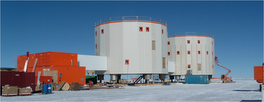Sunday seismometer #5
Mainka (1910)
The Mainka seismograph is a large, single component horizontal pendulum (two instruments installed at right angles to each other are required to fully describe the horizontal ground motion).

Its 450kg mass is suspended in such a way that it oscillates around a near-vertical axis, with a natural period of 8-10 seconds. Damping is provided by a dash-pot system (a plate moving through a viscous fluid). Seismograms are recorded on smoked paper via a mechanical stylus, as was the case for the Wiechert seismographs.

Various models of the Mainka instrument with differing masses were built. The model shown in the photo above and visible in the Strasbourg Seismology Museum was manufactured by the Society for Optics and precision Mechanics of Paris (SOM). It is an improved model, of average sensitivity, robust and easy to tune, and was chosen in 1925 by the French Central Seismological Bureau (BCSF) for deployment at seismic stations throughout France and in the French colonies.
A Mainka seismograph operated at the Strasbourg Seismic Observatory from 1910 to 1960.




1 comment:
I read really much effective material above!
Post a Comment